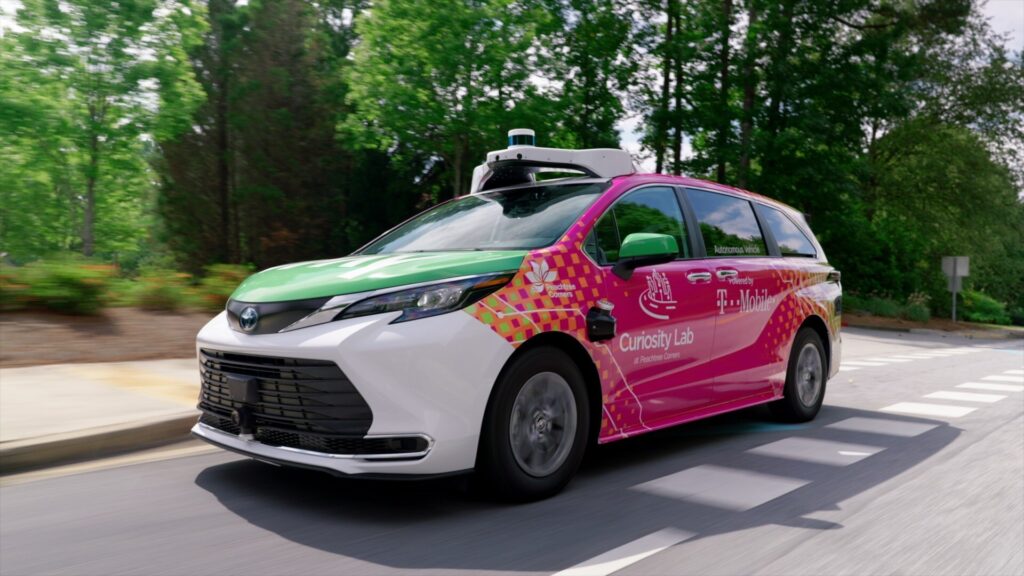Global Wireless Solutions (GWS) has released new Nationwide Connectivity Experience Awards, based on a combination of network testing plus additional insights from surveying mobile device users. GWS gave out three awards: One that focused largely on the mobile experience, one based on the ISP experience via Wi-Fi, and one that combined the two. The winners, respectively, were T-Mobile US, Verizon and AT&T.
The survey is based on six months of data collection from an opt-in consumer panel of more than 100,000 people on Android devices that allow GWS to collect mobile information and conduct thousands of tests in the background on their received network performance, as well as enabling the users to be surveyed. CEO Paul Carter said that sas why GWS focused on the awards as a function of “experience” rather than strict network metrics, and was able to differentiate between achievable network speeds and delivered experience.
“It’s definitely clear that network achievable throughputs are quite high these days but still, what delivered throughputs are people experiencing. [Those] are much, much lower. There’s more similarity across operators from a delivered-throughputs perspective,” Carter said.
A few interesting tidbits: Based on the customer feedback, GWS concluded that “it appears that more US consumers than not are seeing a tangible impact from advanced network connectivity.” Carter explained that when consumers were asked for their thoughts on 5G, around 40% said that it was important to them that they be able to access 5G wherever they were—in other words, they recognized the value of 5G availability. Another 37% said they didn’t really pay attention to which network they were on unless the network was slow, and only 19% of consumers said that they couldn’t really tell if their performance was better while on 5G.
“Let’s not think 5G has become white noise to consumers,” Carter said. “Our polling shows that consumers are keenly aware of 5G and its intended benefits.”
GWS’ analysis found that users spend around five fours a way on their mobile devices, with about 72% of their time spent on Wi-Fi versus the mobile network. How were they using those devices? Users spent more than 50% of their time with just 10 mobile apps: Facebook, YouTube, the Chrome browser, TikTok, Google Maps, Facebook Messenger, Instagram, Google Messages, Snapchat and Gmail.
Carter said that GWS also asked mobile device users about their perspective on artificial intelligence, particularly on their devices. Nearly 40% responded with enthusiasm for AI if it improved their productivity or made their lives easier, but the responses with reservations covered a pretty broad range of reasons: they didn’t want it, worried about data privacy, thought it wasn’t sophisticated enough to be useful, or thought it was inevitable and didn’t really care.
Carter interpreted those responses on AI as: “It’s there, but it’s not really there yet. I think it’s still early days for people to understand what it’s going to do for them.”
In other test news:
-There were several news tidbits this week related to autonomous vehicles. In Peachtree Corners, Georgia, T-Mobile US‘ 5G network is connecting a new autonomous shuttle that will start carrying members of the general public next week, in partnership with May Mobility. A Toyota Sienna Autono-MaaS vehicle will provide ride in an eight-stop service zone that includes hotels, retail shops, offices and restaurants, as well as Peachtree Corners’ City Hall and the Innovation Center at Curiosity Lab. The shuttle will run from 8 a.m.-4 p.m. on weekdays and can handle up to four passengers, who can book rides on-demand through an app.

“We have been able to demo, test and deploy multiple autonomous vehicle solutions since we opened in 2019, and we are excited to continue these efforts by welcoming May Mobility to Peachtree Corners and the state of Georgia,” said Peachtree Corners City Manager Brian Johnson. “As we continue to focus on bringing autonomous mobility options to residents and visitors to better connect them with the community, May Mobility’s solutions provide an on-demand service within our ecosystem, with the goal to slowly expand the route to our Town Center.”
Also this week, autonomous vehicle company recently completed testing of autonomous 11-passenger shuttles at Mississippi State University. The two vehicles will now offer rides to students, faculty and guests for a tentative pilot period through mid-November. They carry 10 passengers plus an on-board attendant who will provide information about the pilot program.
On the cautionary side, however, testing firm AMCI is publishing results from a 1,000-mile evaluation of Tesla‘s Full Self Driving mode, including a series of videos documenting when the system required human intervenion, which AMCI said was an average of a disengagement every 13 miles. “Although FSD can often drive the car competently for limited distances across a wide range of scenarios, the mistakes it does make continue to put occupants and the public at significant risk,” AMCI said in a release. “Beyond FSD’s actual performance … these potentially dangerous driving errors demonstrate the incontrovertible need for regulation and agreed upon metrics for comparable, system-to-system evaluation. One of the key metrics to define across all types of autonomous and semi-autonomous systems is what constitutes an ‘intervention’ – which system actions warrant one, and how they should be scored by regulators whenever one occurs.”
–O-RAN Alliance‘s fall plugfest began in August and will continue through November, with a summary report to be issued afterwards. The event has 31 operator and institutional hosts and is happening in two dozen labs around the world, according to O-RAN Alliance. This season’s plugfest focuses on six testing “themes” of priority for the Alliance: O-RAN energy consumption and efficiency, end-to-end deployment templates, DevOps and test automation; open fronthaul testing in half a dozen labs to demonstrate repeatability and consistency; system testing with Layer 1 acceleration; whitebox hardware diversity; and open fronthaul testing with multiple radio units (RUs).
“Achievements made at O-RAN PlugFests prove to efficiently support the industry in accelerating the move from specification to commercialization,” said Brian Daly, who is co-chair of the O-RAN Technical Steering Committee, and AVP at AT&T Services. “High interest from the O-RAN community is promising to build on achievements in the PlugFest focus themes, which started in Spring this year.”
-A new report from market analysis firm TechNavio estimates that the Ethernet test equipment market will see a compound annual growth rate of 5.79% through 2028, increasing by $675.2 million. Driving factors for market growth include growing demand for high-speed Ethernet as well as its use within data centers, according to TechNavio.

